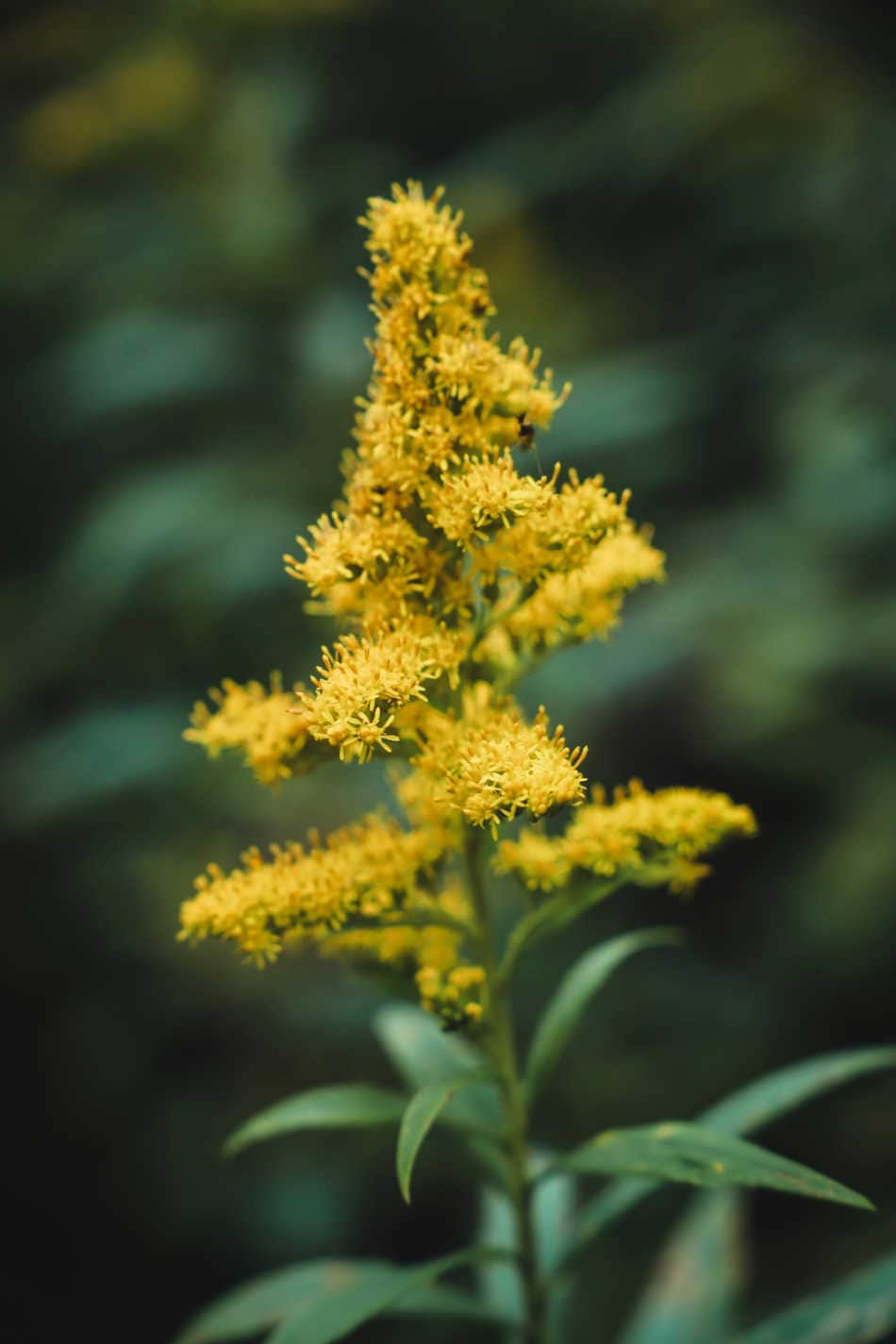
Goldenrod is one of my favorite autumn herbs for harvesting and using for autumn-related ailments.
Below are two of my favorite ways to prepare and use goldenrod in the autumn, along with some harvesting tips you might not have heard about before!
Goldenrod Tincture for Autumn Allergies
One of my favorite ways to use goldenrod is to help ease autumn allergies, mainly when drippy noses and congested sinuses are present. Herbalist Matthew Wood teaches that goldenrod is a specific herb for the manifestation of allergies with red conjunctiva, glazed or watering eyes, and an itchy nose.
My favorite way to prepare goldenrod for fall allergies is to tincture the fresh herb, using fully opened flowers and some leaves, in a 40% ABV alcohol, such as brandy.
When autumn allergies are an issue, I use 20-30 drops 3-4 times a day when autumn allergies are bothersome.
If you want to see this process in action, I created a video tutorial about making a goldenrod tincture here.
Goldenrod Infusions for Digestive and Urinary Complaints
My second favorite way to use goldenrod is to add it to infusion blends for digestive and urinary complaints.
Goldenrod has cooling, drying, and toning energetics and an affinity for the mucous membranes that line the digestive and urinary tracts. This makes it a great fit for digestive complaints, gut membrane permeability concerns, urinary tract infections, and other issues that affect the lining of these body systems.
When harvesting goldenrod to dry and store for later use in an infusion blend, I like to harvest the flowering tops that are budding but not fully opened. This helps to prevent the flowers from turning into fluff as they dry. I also harvest some of the upper leaves of the plant as well. Place all of this in a dark location with plenty of airflow and allow it to dry until it crunches like a cracker. You can then crumble the plant material (which is called garbling) and transfer it to a labeled storage container for future use.
If you’d like to learn how to incorporate goldenrod into tea blends, check out my short and sweet online tea blending course, The Sunday Steep. It will not only teach you how to make your own tea blends, but how to make tea a daily ritual — one that you will look forward to — as well!
Okay, friends! Now it’s time for you to get outside, positively identify goldenrod (quite a few species are interchangeable), and put what you’ve learned in this post into action.
Comment below if you have any goldenrod questions or want to share how you like to use this herb.
Love and light,
Meagan
I like goldenrod as a honey and also as fall decor.
Oh, a goldenrod honey. That’s a great idea! And yes, I always snip some goldenrod tops and put them in empty vases during autumn. They dry well and hold their color year round.
love this information on this herb!
Thank you